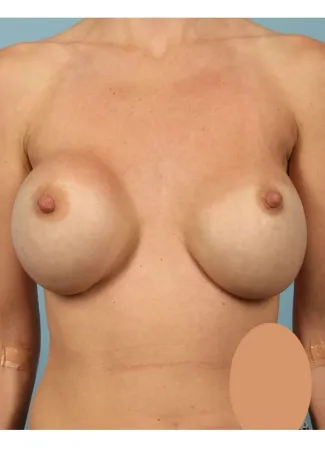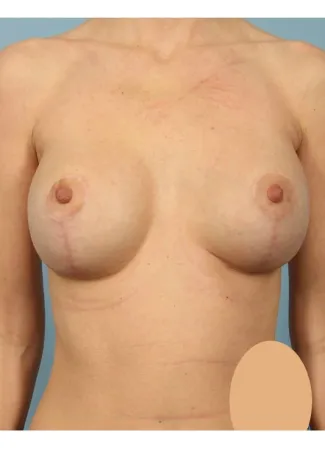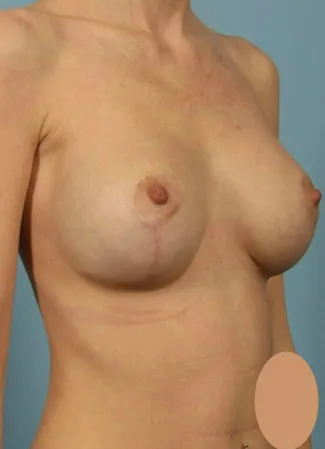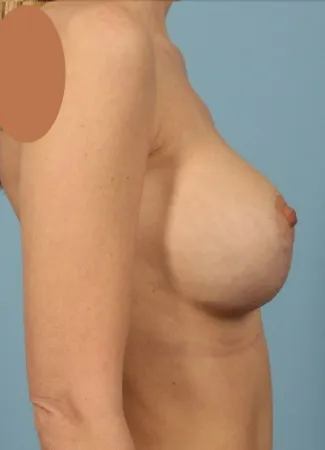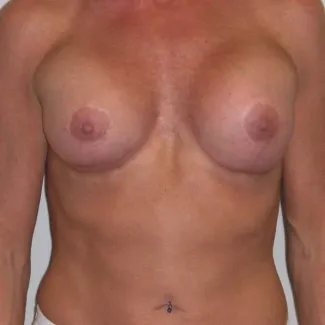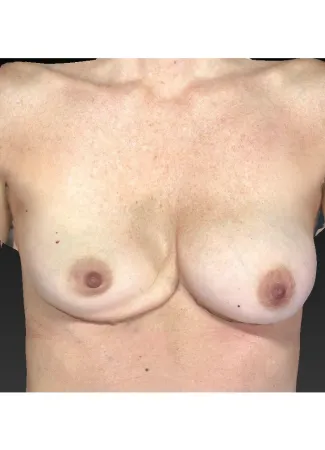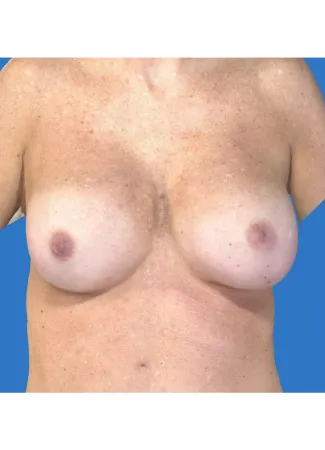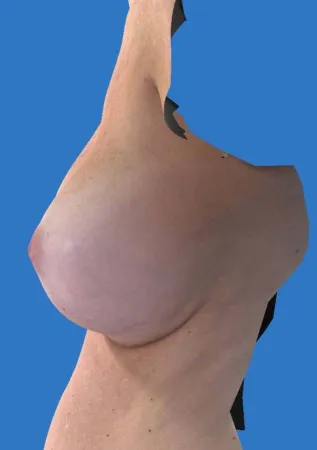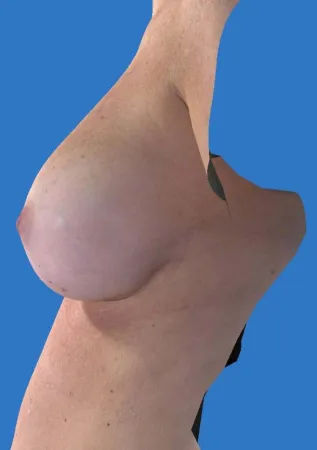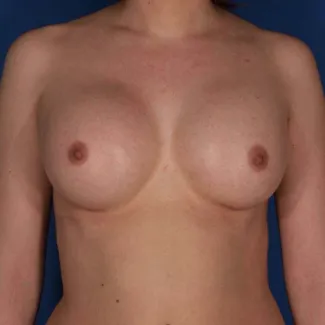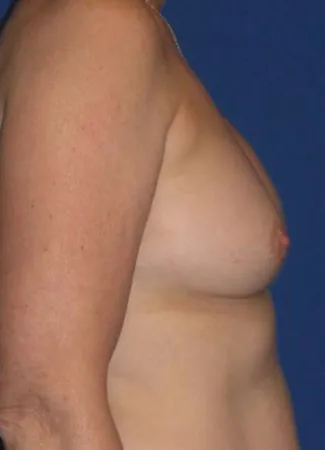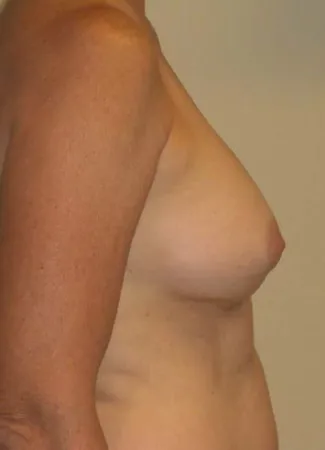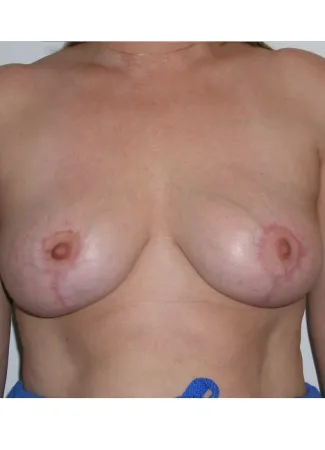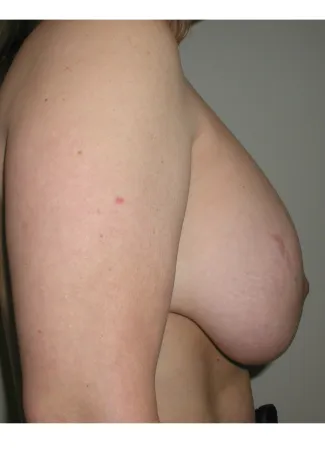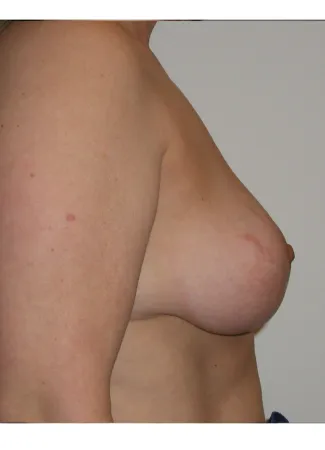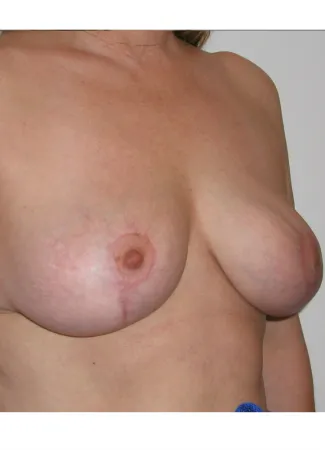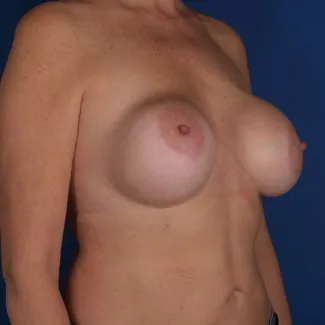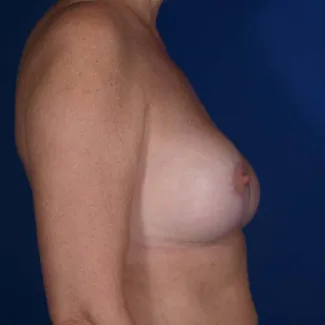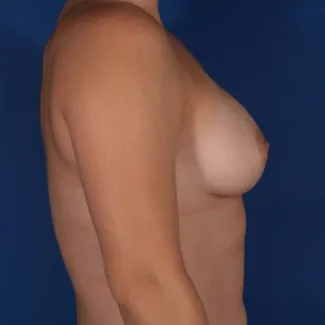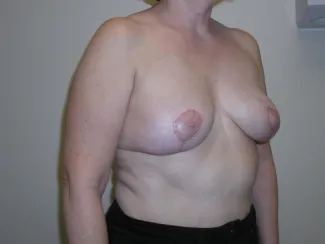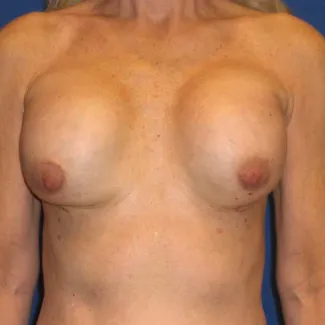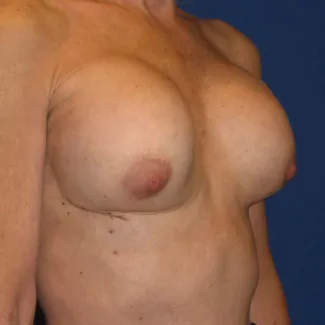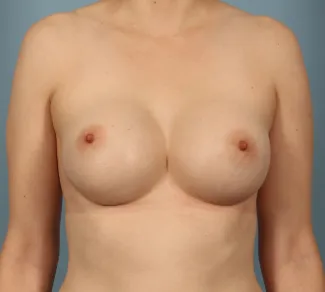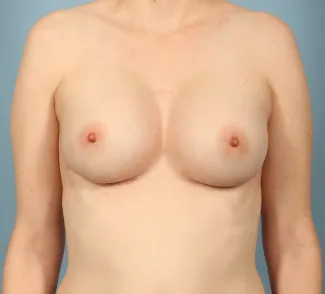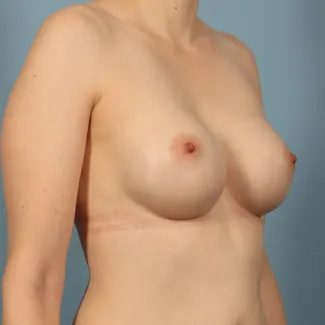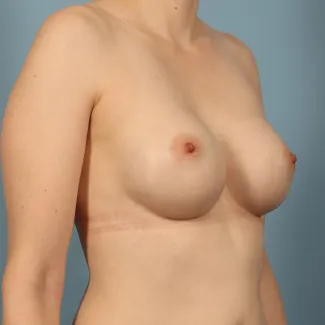Breast Implant Revision
Although we wish it weren't so, sometimes breast implant surgery results don't quite reach the goal. There are many reasons you might need a re-do of a prior breast implant surgery.
Dr. Kavali understands that you may have hopes, expectations, and even disappointments related to your prior surgery. Please know that she will really hear what you have to say and that she will do her very best to meet your goals.
The consultation time is meant to be comfortable and educational. We want you to feel completely informed, so you can make your own personal best decision.
See the Possibilities
Before & After
Select an Area:
- Correction of Implant Malposition and Capsular Contracture
- Capsular Contracture and Malposition Correction
- Correction of Implant Malposition (Symmastia) and Implant Rupture
- Correction of Implant Malposition (Bottoming Out)
- Correction of Implant Malposition (Bottoming Out) 2
- Correction for Ruptured Implants with Capsular Contracture
- Correction of Breast Ptosis (Droop) over Implants
- Correction of Implant Malposition
- Correction of Implant Malposition 2
- Correction of Implant Rupture, Capsular Contracture, Implant Malposition
- Smaller Size Desired
- Breast Implant Revision
- Severe Capsular Contracture Correction
- Correction of synmastia and implant malposition
Things You Need to Know
Have Questions?
-
Who needs breast implant revision?
Who needs breast implant revision?
Although we wish it weren’t so, sometimes breast implant surgery results don’t quite reach the goal. There are many reasons you might need a re-do of a prior breast implant surgery. Here are a few of them: 1. Unhappy with breast size after prior breast implant placement (too big or too small) 2. Capsular contracture: hardening of the scar capsule around the implant 3. Implant malposition: implants sitting too high or too low or too close together or falling under the armpit 4. Bottoming out: implants sitting below the lower crease of the breast, making the nipple sit too high on the breast mound 5. Implant deflation or rupture 6. Breast tissue drooping over the implant (breast ptosis) 7. Implant wrinkling or rippling or excessive palpability (able to see and/or feel the implant easily) 8. Desire to switch implant type (from saline to silicone, for instance) -
What can I expect during my consultation?
What can I expect during my consultation?
Dr. Kavali understands that you may have hopes, expectations, and even disappointments related to your prior surgery. Please know that she will really hear what you have to say and that she will do her very best to meet your goals. When you contact our office for a consultation regarding any surgery using breast implants, we will enroll you in EMMI, a free online educational program regarding breast implant surgery. You can go through the EMMI program at home, at your leisure, prior to your consultation. EMMI will give you a good baseline of information related to implants and implant surgery and will allow you to have a very informed conversation with Dr. Kavali during your consultation. Even if you already have implants, we think you’ll find EMMI very helpful. After you arrive at our office, you’ll first meet with one of Dr. Kavali’s Physician Assistants. They will begin the consultation process by reviewing your medical history, establishing your goals for the surgery, and by taking relevant photographs for your medical record. Dr. Kavali will complete the consultation process by meeting with you to personally hear about your goals for surgery. She will ask about your desired breast size and anything else related to the appearance of your breasts that you feel is important. This conversation will help Dr. Kavali understand your expectations and determine whether and how they can realistically be met. Dr. Kavali will examine your breasts. She will be looking at the size and shape of your breasts, the quality of your skin, and the location of your nipples and areolas (the pigmented skin surrounding the nipples), and the position of your implants. If your breasts droop, she may recommend a breast lift as part of the breast implant revision. The consultation time is meant to be comfortable and educational. We want you to feel completely informed, so you can make your own personal best decision. There are some questions that commonly arise during the consultation process, so we’ve included them here. -
What decisions have to be made for breast implant revision surgery?
What decisions have to be made for breast implant revision surgery?
Generally, you and Dr. Kavali will need to make four basic decisions before you have breast augmentation surgery: 1. What type of implant to use: saline or silicone, textured or smooth, tear-drop or round, or none at all 2. Where to place the implant: above or below the muscle or in a ‘neosubpectoral’ pocket 3. How to get the implant where we want it: same scar or new one(s) 4. What size implant to use: same, bigger, or smaller -
What type of implant should I choose?
What type of implant should I choose?
You have two choices: saline (salt water) or silicone. Either is a fine choice, but there may be good reasons for you specifically to choose one over the other. In general, silicone implants have a more natural look and feel than saline implants. Silicone implants also have a lower risk of wrinkling and rippling than saline implants. Saline implants are still a fine option, though, for many women. You’ll be able to see and feel both types of implants during your consultation. You’ll also have a lot of information from the EMMI educational program, and Dr. Kavali will help you make the final decision that’s right for you. In most cases, a smooth round implant will work well. In some cases, though, a textured implant might be recommended for you. -
Where should I have my implant placed: over or under the muscle or in a ‘neosubpectoral’ pocket?
Where should I have my implant placed: over or under the muscle or in a ‘neosubpectoral’ pocket?
There are good reasons for placing an implant below the muscle—there’s less wrinkling and rippling, there may be a lower risk of capsular contracture (hardening of scar tissue around the implant), and there may be a more natural breast shape and less breast droop over the years. If you have capsular contracture or implant malposition (implants aren’t sitting in the right place), Dr. Kavali believes it is usually important to put your new implants in a new pocket. So, if your current implants are above the muscle, she may recommend that you put your new implants below the muscle. If you current implants are already under the muscle, she can create a ‘neosubpectoral’ pocket which will let you keep your new implants below the muscle but still let them sit in a “new” pocket. Dr. Kavali will likely talk to you about this procedure and let you know if it’s appropriate for you. -
Where should my incision be placed?
Where should my incision be placed?
Incisions for breast implant revision can be made in the crease under the breast (inframammary incision), around the lower edge of the areola (periareolar incision) or in a ‘lollipop’ shape (around the areola and down the center of the lower half of the breast). In general, Dr, Kavali will try to use your existing scars. She will discuss your options and let you know her specific recommendations for you and give you the reasons for her recommendations. -
What size should I choose for my new breast implants?
What size should I choose for my new breast implants?
The question of implant size is nearly impossible to answer before your consultation. Certainly, you should look at before-and-after photos to get an idea of what you like. However, it’s important to realize that there are many variables that affect what implant size will work best for you—your starting breast size, your current implant size, your desired breast size, your ribcage width, and your starting breast width, for example. Dr. Kavali takes your measurements, then chooses a range of implant sizes that will work for you. If you have significant implant malposition and you already have large implants relative to your tissue characteristics, Dr. Kavali may recommend a size change for you. The final decision is yours, but she will explain her reasons for any recommendations she makes for you. -
What can Dr. Kavali do that’s different from what I’ve already had done?
What can Dr. Kavali do that’s different from what I’ve already had done?
Sometimes it just takes a new set of eyes and hands on a situation to make it better. This is often the case if you’ve already had revisions with your original surgeon and still haven’t reached your goals. Dr. Kavali uses multiple techniques during breast implant revision surgery, including some or all of the following: -Implant change: changing the size, shape, composition, or texture of the implants -Site change: moving implants to a new pocket. For instance, moving implants from above the muscle to below the muscle, or moving implants from below the muscle into a “neosubpectoral” pocket (still below the muscle, but in a new pocket). -Capsular revision, which could include removal of part or all of the existing scar tissue or creating a capsular flap (an “internal bra”). -Adding ADM (Acellular Dermal Matrix) for increasing the thickness of tissue coverage over your implants, for securing your implant position, and for helping to prevent future capsular contracture. There are several types of ADM available, including AlloDerm, Strattice, and Surgimend, among others. -Using fat transfer (your own) to increase the thickness of tissue coverage over your implants, to smooth implant edges, and to improve any contour imperfections (refining the results). -
What are the risks of breast implant revision surgery?
What are the risks of breast implant revision surgery?
Many breast implant revision surgeries are done each year, and most go well with no major problems. But problems certainly can occur, as with any surgery. Some of the potential complications include reactions to anesthesia, blood accumulation that may need to be drained surgically, and infection. Although rare, an infection that does not get better with appropriate treatment may require temporary removal of the implant and/or removal of ADM, if it was used. Changes in nipple or breast sensation may result from breast implant revision surgery. If capsular contracture was part of the reason for your breast implant revision surgery, you should know that you are more likely to have another capsular contracture than someone who has never had one. Dr. Kavali does everything she can to optimize your results, but you still may form another capsular contracture, which may lead to additional surgery. Breast implants are not meant to last forever, and deflation or rupture may occur. When you have your regular mammograms done, you will need to tell the technician that you have breast implants. Additional views of your breasts will need to be taken. Dr. Kavali, in some instances, may recommend other types of examinations such as ultrasound or magnetic resonance imaging (MRI). It is possible that the presence of breast implants could delay or hinder the early detection of breast cancer. It is important for you to know that no implant has been linked conclusively to any significant disease in humans. This is not, by any means, a complete listing of the risks associated with breast implant revision surgery. During your consultation and preoperative process, Dr. Kavali and her team will discuss other potential risks with you. -
What happens after my consultation?
What happens after my consultation?
Once all your questions have been answered during your consultation, you’ll meet with Zaphea, our Patient Coordinator, who will put together the financial and scheduling information you’ll need. We never want you to feel pressured to schedule any surgery. Dr. Kavali wants you to gather all the information you need and take all the time you need to feel comfortable with your decision to proceed. Once you are ready to schedule your surgery, just let us know. We’ll coordinate a surgery date with you, then we’ll see you again for your preoperative appointment, which will take place a couple of weeks before your surgery date. Of course, we know that many people (like our out-of-state clients) have special circumstances that may require their preoperative appointment to take place closer to the surgery date, and we’re happy to oblige. On the morning of surgery, Dr. Kavali will meet with you again to confirm your final implant choice and the surgical plan. In most cases, you’ll be able to go home the same day as your surgery. Your stitches will be under the skin, and they will dissolve, so you won’t need to have any stitches removed. There will be no drains, except in some circumstances (you’ll know before your surgery). Most women are able to drive after only a few days, and most women are able to return to a desk job within a few days as well. More strenuous jobs require more time off, usually not more than a week or two.
-
DIAMOND GLOW IS HERE! THE BEST SOLUTION FOR HEALTHY, VIBRANT, REJUVENATED SKIN
- Diamond Glow (formally Dermalinfusion) is an advanced skin-resurfacing treatment that combines exfoliation, extraction, and infusion of condition-specific serums to improve skin health, function and appearance.
- A patented, non-invasive treatment, Diamond Glow is fully customizable and the perfect solution to address a wide variety of skin concerns and conditions from head-to-toe and is suitable for all skin types and tones.
- Leave feeling rejuvenated at a very reasonable price point
- Dr. Kavali loves her results! (see Instagram @drkavali)
- Call 404-250-3333 today or email info@drkavali.com to make an appointment
-
- Allergan's Allē Program is the rewards program preferred by Kavali Plastic Surgery
- To get the maximum benefits and savings from all of Allergan's products, we recommend downloading the app.
- Often, Allergan sends offers to you directly through the app.
- Click the buttons below to get the app
- Log in to your account and come see us to apply the savings!
- If you have trouble please come on in and we will gladly help :-)
-
That's right, we can now treat your spider veins here at Kavali Plastic Surgery! Our own Stephanie Parker, PA-C has 8 years of vascular treatment experience and is ready to help. Call or email us for more info: 404-250-3333 or info@drkavali.com

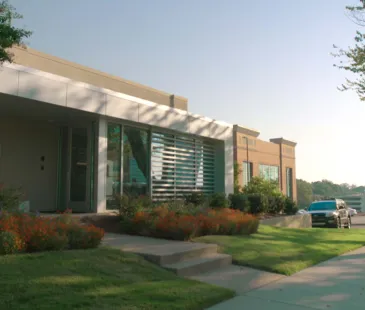
About Kavali Plastic Surgery
Metamorphosis for your mind, body and soul.
What we provide is plastic surgery, cosmetic procedures, reconstructive procedures, and skin care. But what people really get from us and from our products is HOPE.
Request a Consultation